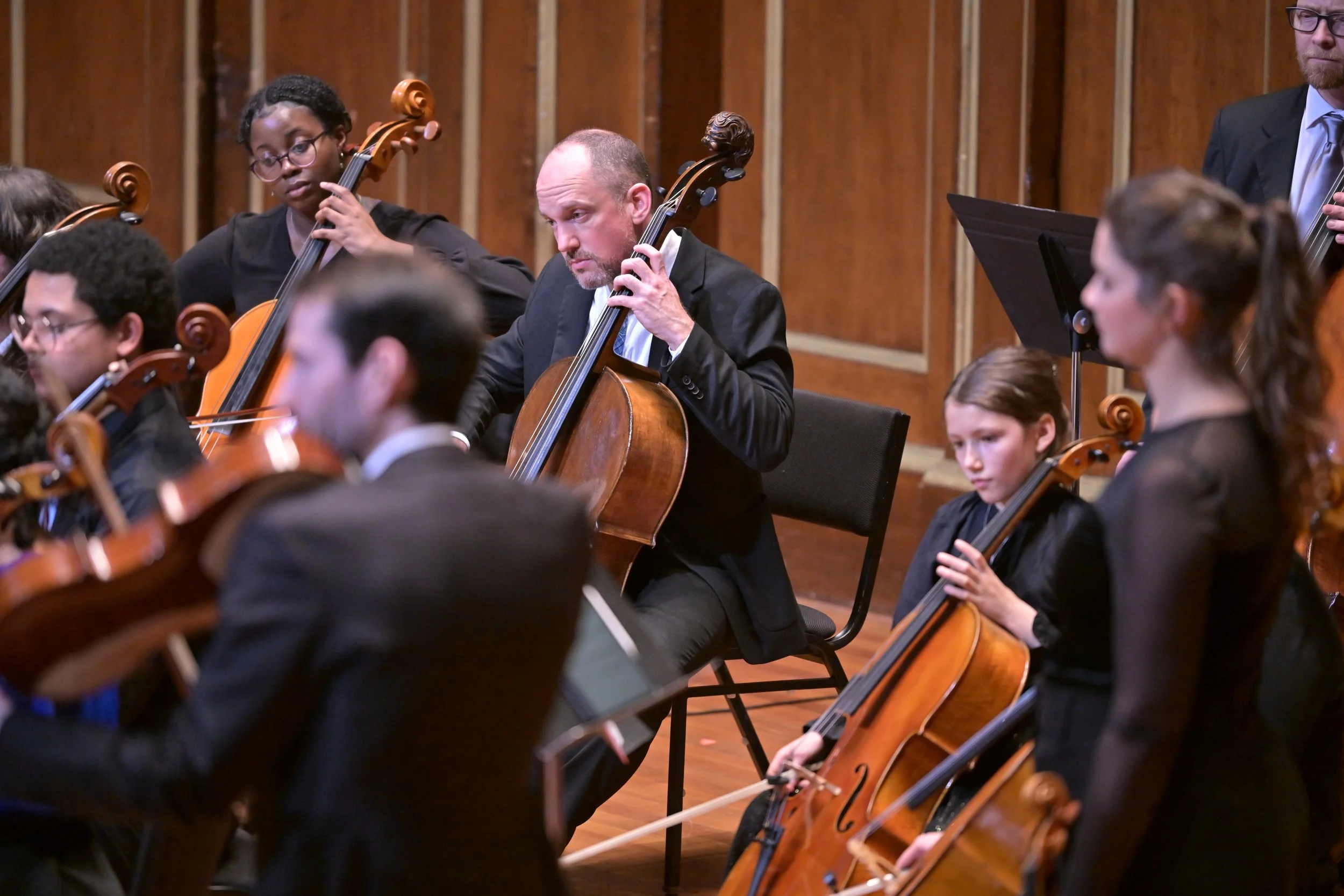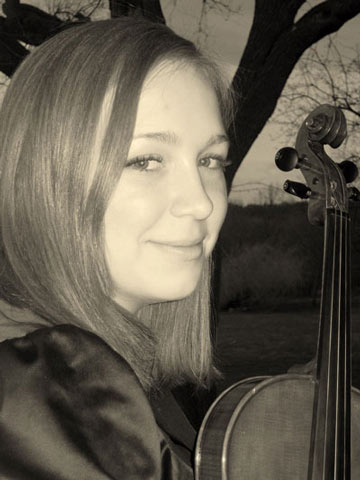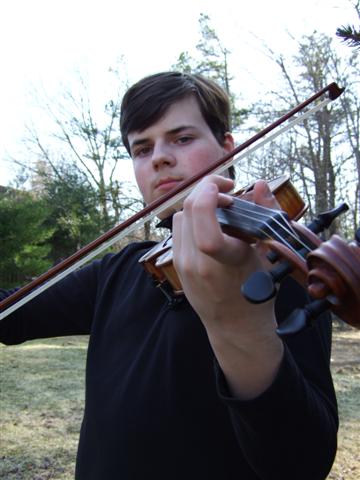Kathryn Bacasmot authored these highly entertaining and thought-provoking program notes. Enjoy!
This is your shovel. The music is your earth. Dig in.
I know, I know. You’re looking at this and thinking, “these are the program notes? Where is the anecdotal story followed by interesting historical factoids, dates, and a roadmap to the music itself?” Don’t flip the page over. This is it. Welcome to A Far Cry program notes. Let’s talk “Legacy.” If you type the word “Legacy” into the search box on dictionary.com, the fifth definition reads: “of or pertaining to old or outdated computer hardware, software, or data that, while still functional, does not work well with up-to-date systems.” Is it heresy for me, a musicologist, to say I think of “classical” music when I read that description? Musicians inherit a legacy and are handed down history. Now would cease to be now if then or when did not exist. Without composers and performers it is a merely a series of archaic symbols, a cacophony of dots and lines, data that, while still functional, might be dead on a parchment pyre. Musical history is a delicate fabric of encounters easily unraveled. Warp & Weft. Teacher & student. Composer & performer(s). Choreographer & music. The meetings of minds, and in those meetings the inheritance is remixed and renewed. Data, still functional, in a karmic cycle of rebirth.
Isn’t it fascinating that so much invisible beauty is manufactured through such physical labor? The hand of a composer grips a pen that hovers over paper in anticipation of what will come next, or clicks the mouse on composition software. The body of the performer aches through hours of rehearsal, holding, caressing, cajoling, thrilling in exultation or trembling in defeat. Instruments are built and repaired, morph and stay the same, according to the sounds of the times and the materials and technologies available. Music is hardly a dead language. It’s alive in the physicality. Each person you see or hear on stage today is a part of the inheritance. Their fingers are fluent and fluid espousing old and new dialects of the language of sound. You, the audience, play an equally vital role. Your ears and minds are the stereos. If a tree falls in a forest, if a sound wave shoots through an empty hall, does anyone care?
Wolfgang Amadeus Mozart (1756-1791) had quite an ear attached to the side of his head. Legend (who occasionally goes by the name Dr. Charles Burney) tells us the young Mozart was responsible for writing down, and therefore preserving the legacy of, the famous Miserere by Gregorio Allegri (1582-1652), which was traditionally handed down only orally. Mozart was a bridge to the past and an agent for the future. His piano concertos are among the roots of the genre. Today we hear pianist Markus Schirmer put his interpretational brick down on the road that Mozart laid in Vienna, 1782.
Felix Mendelssohn (1809-1847). Talk about legacy. His aunt Sara Levy studied with W.F. Bach and was a patron of C.P.E. Bach (yes, sons of J.S. Bach). Additionally, one of Felix’s claims to fame was his 1829 “revival” of J.S. Bach’s St. Matthew Passion. With that ascension to the podium he effectively launched the widespread fame of Bach and an appreciation for regular performances of pieces by long dead composers (more of an oddity on a program in prior days when the new was all the rage). Today’s performance of Mendelssohn’s Sinfonia No. 8 in D major composed in 1822 features the next generation of musicians with New England Conservatory Preparatory students Andrew Dezmelyk and Meredith Treaster.
Igor Stravinsky (1882-1971). Well, he started with a “neo-classical” phase and then jutted off to a springtime rebirth of the old into a new dialect, didn’t he? His Concerto for Strings in D major from 1946 leads something of a double life. Today you hear it in its usual concert setting, but it moonlights as accompaniment to a dance. Choreographer Jerome Robbins (1918-1998) heard it and thought about female insects preying on their male counterparts and called it “The Cage.” Rather Kafkian. King of the Castle? Try Queen.
The “Rite of Spring” was a passage of a different kind - the kind that dared to go places that induced public fist fights (maybe Plato was on to something with that concern about music stirring up hot headedness after all?). Dissemble the data and it still functions. If you break the mirror and put it back together it reflects and refracts in an entirely new way.
Today you will hear something you have never heard before in your whole life. That’s something you can’t claim every Thursday of the week (well, unless you want to go all John Cage on me, but let’s not digress). Reiko Yamada’s New Shadows in the Raw Light of Darkness was inspired by and written for A Far Cry upon repeatedly listening to the ensemble awaken a new soul in old pieces. Like Georgia O’Keefe before her, Yamada was inspired by the stark landscape of the South West – Taos, New Mexico in Yamada’s case – during her 5-week residency at the Helene Wurlitzer Foundation. Out there the lines of the earth stretch and clash with the lines of the landscape, both natural and manmade. A collection of lines. A collection of individuals and friends. A collection of musicians weaving and sewing together the lines of music, the threads of sound. A fabric paying homage to the past, building upon the legacy, attaching new rungs on the ladder to the future and casting new shadows in the climb.
Data. Functional. Legacy is now and legacy is you.
Kathryn J Allwine Bacasmot a pianist/harpsichordist/musicologist and freelance writer. She received her Masters in Musicology at the New England Conservatory of Music with her thesis on Björk Guðmundsdóttir and aspects of the female experience in her fifth studio album, Medúlla. In addition she works for From the Top, a weekly radio and 8-time Daytime Emmy Award nominated television show featuring the nations most talented young classical musicians distributed on NPR and PBS.



 A Far Cry is pleased to announce that Meredith Treaster is a winner of our first Young Artist Competition. As a winner, Meredith will join the viola section of A Far Cry in concert later this month.
A Far Cry is pleased to announce that Meredith Treaster is a winner of our first Young Artist Competition. As a winner, Meredith will join the viola section of A Far Cry in concert later this month.  A Far Cry is proud to announce that Andrew Dezmelyk, a violin student at the New England Conservatory Preparatory School, will be joining A Far Cry in concert later this month, as a winner of A Far Cry's Young Artist Competition.
A Far Cry is proud to announce that Andrew Dezmelyk, a violin student at the New England Conservatory Preparatory School, will be joining A Far Cry in concert later this month, as a winner of A Far Cry's Young Artist Competition. 






